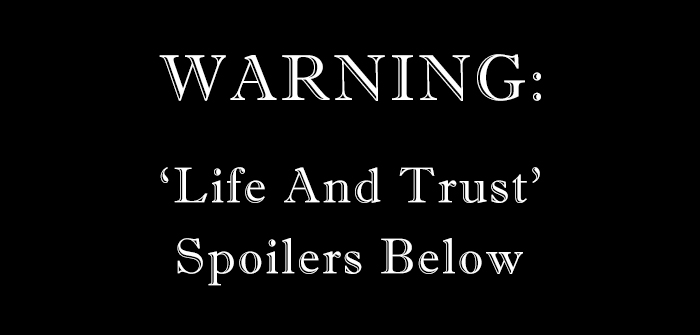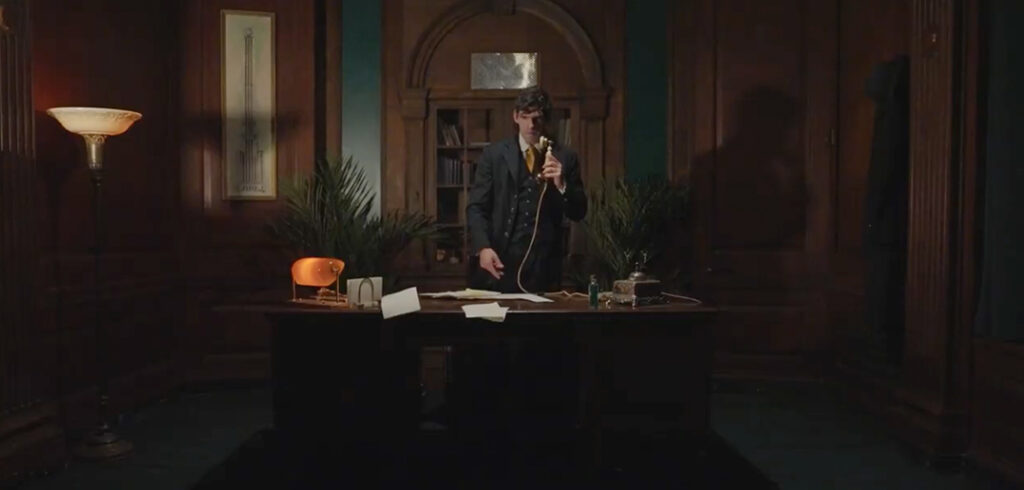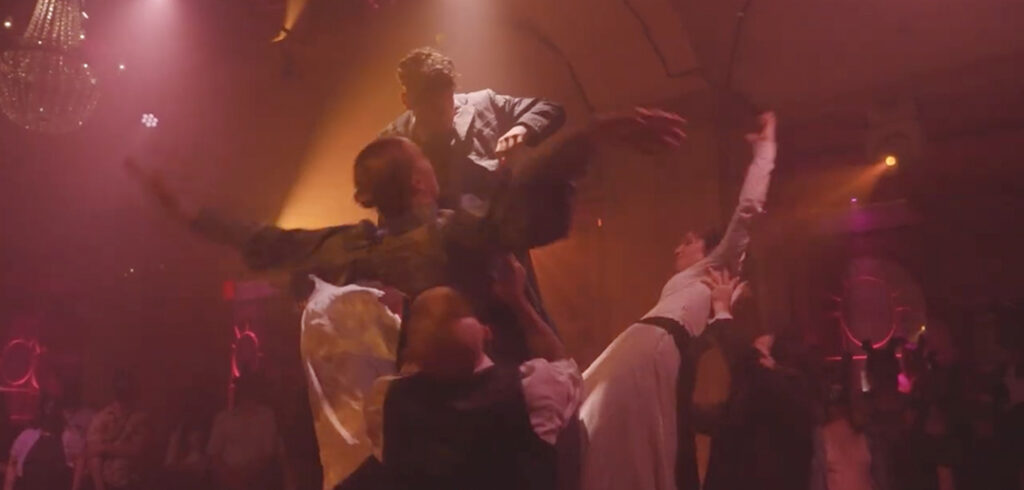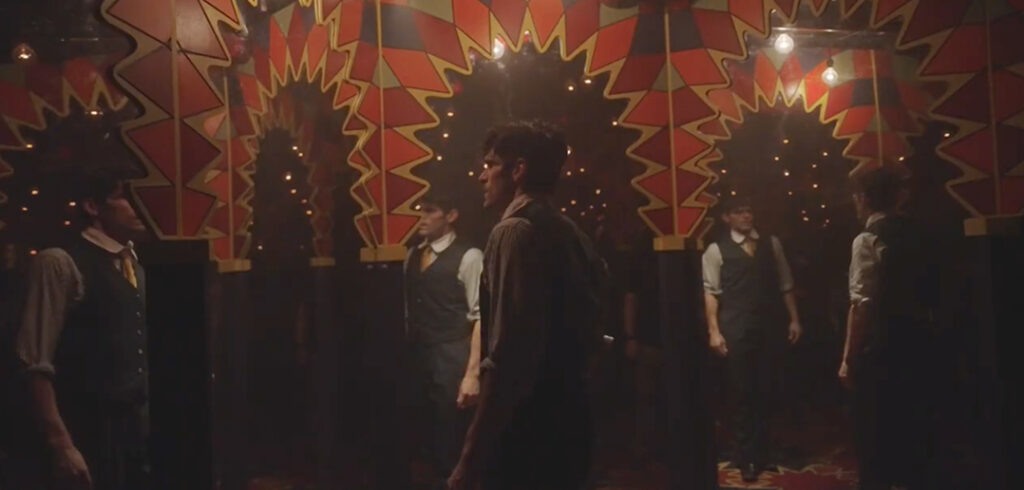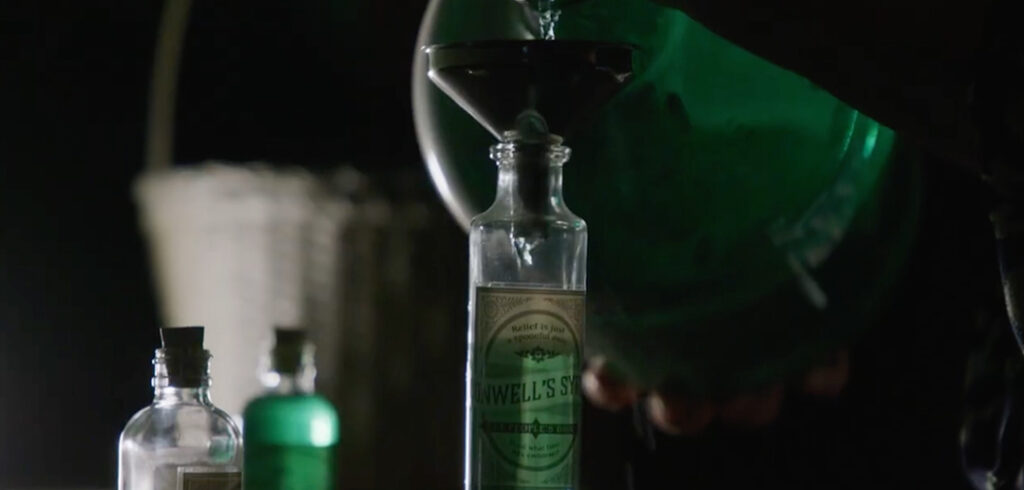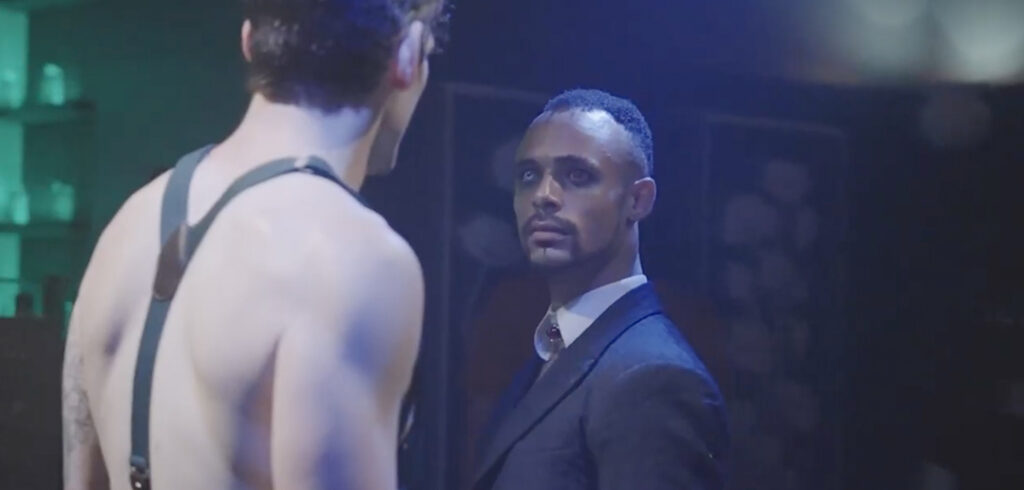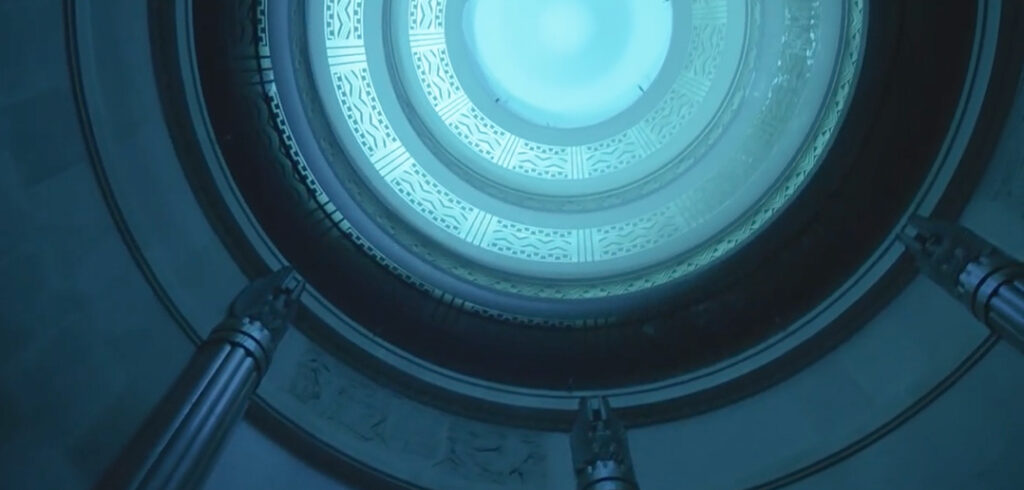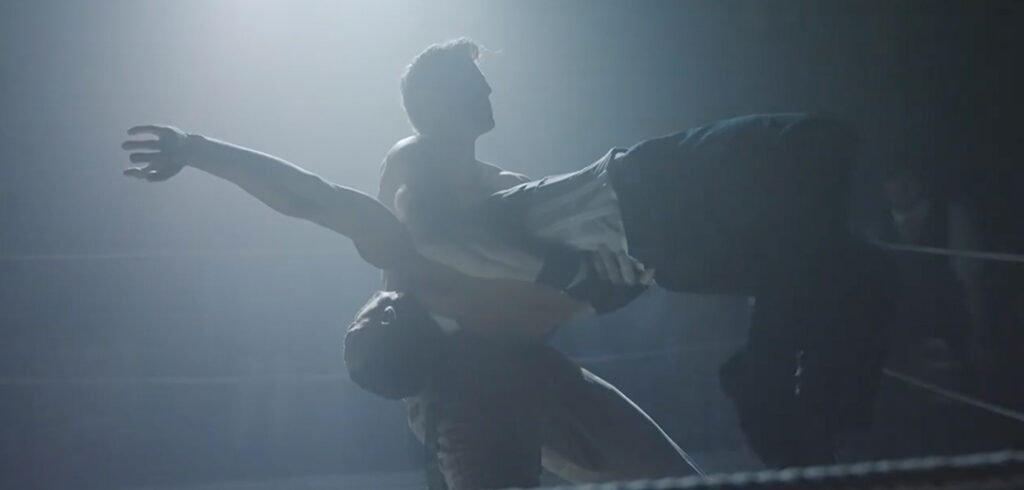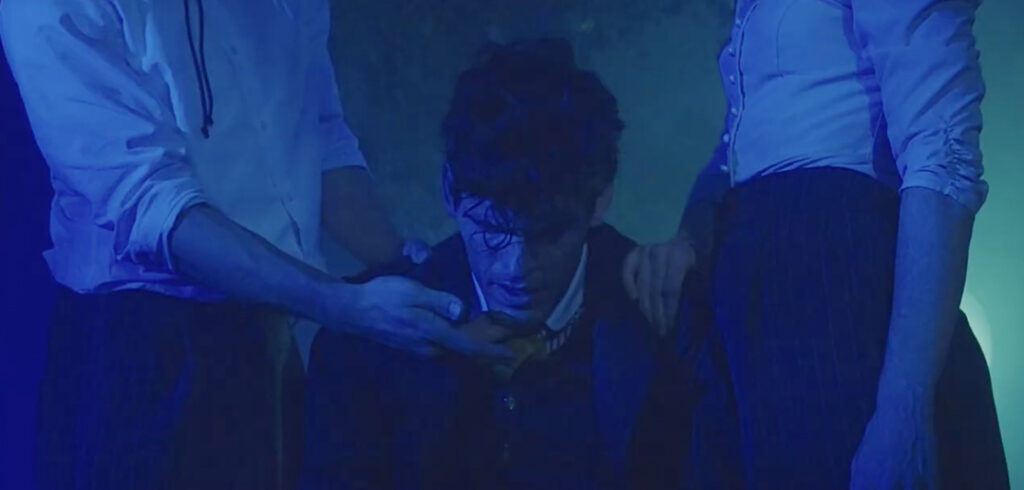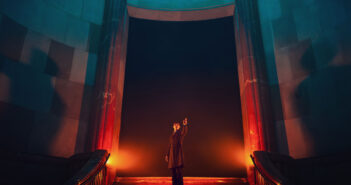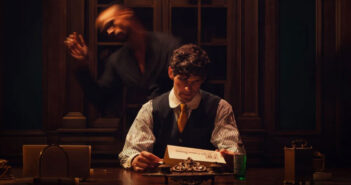Life And Trust is an initiation.
Because it’s far more than just a performance when attending an immersive theater show like this. Emursive, the production company responsible for Life And Trust NYC, invites you into a sprawling dreamscape that tunnels itself deep into Manhattan’s literal underground, forming a labyrinth of seduction and sorcery.
Whether or not the show works depends entirely on you and why you’re attending it.
For those who want something new and weird to experience, Life And Trust could either overwhelm or underwhelm, depending on your patience and level of imagination.
But if you’re searching for an invitation into a supernatural world separate from our own (like me) then you won’t be disappointed. But there are a few caveats.
(Note: I will use Life And Trust and Life And Trust NYC interchangeably for shameless SEO purposes.)
A Faustian Bargain Comes Due
A traditional review for Life And Trust NYC won’t work because Life And Trust NYC is not a traditional show. Besides, there are plenty of them out there anyway, like the ones from the New York Times and Vulture.
I went into Life And Trust looking for capture, and that’s what I got.
As expected, Life And Trust NYC follows a similar pattern to Sleep No More. You enter a dark and winding hallway lined with eerie bank ads, check your items, and then wait around in a themed holding area before admittance into the show. For Sleep No More, it’s the Manderley Bar of the fictional McKittrick Hotel; this is the more successfully immersive of the two holding areas. Still, the echoing marble chamber that is Conwell Coffee Hall does its job well enough. (It converts into a bar at night.)
I was periodically reassured by different hosts that my “meeting” with Mr. Conwell would start soon. When it did, another dark and brooding hall awaited me, lined with dim lighting, mahogany walls, and watchful portraits of bank trustees. The whole thing reminded me of the queues for the Haunted Mansion and Tower of Terror rides in Disney World. I loved it.
Once in the offices of J.G. Conwell, we were transported back in time to 23 October 1929—the beginning of the Wall Street Crash of 1929. The reclusive banker tells us of his obsessions and sacrifices—all of which led to the emerald-green Conwell Syrup, a concoction invented with supernatural meddling to ease the suffering of Conwell’s ailing sister. The substance gave Conwell the fortune that built the Life and Trust Bank. But as fortune goes, you can’t take it with you when you die.
Conwell (Tony Torn) is reminded of his debts by Megaera (Tori Sparks), his supernatural assistant (named after one of the three Furies from Greek mythology). The Faustian bargain has come due, but J.G. Conwell is not ready to pay up. One more chance, he begs, one more chance to travel into the past and fix everything.
His wish is granted.
Conwell is sent back to the year 1894, and us along with him as masked observers, wraith-like and silent.
Breathtaking Scope And Scale
This is where the coherent plot summary ends.
But that’s the fun of an immersive theater experience like Life And Trust. You fall out of the everyday waking world into a mysterious moonlit dreamscape. The events unfolding around you wait for no one, and it’s your responsibility to choose what you will follow and observe.
First, it needs to be said that Life And Trust NYC is an absolute marvel of set design.
Its scope and scale is breathtaking. I whispered “Good God” under my mask more than once when stumbling from one spectacle to another. All of the style from Sleep No More is there, but amplified in both detail and size.
I wandered around the illustrious apartments of the the Conwell family and its associates. I stumbled across some kind of white temple structured around a heavy vault door. I walked a carnival plucked from Guillermo Del Toro’s Nightmare Alley. I pushed through a funhouse of mirrors leading to a moonlit lake. I admired a gallery of occult artifacts, including an obsidian scrying mirror like the one used by John Dee and Edward Kelley in their Enochian chats with angels.
But here are three specific set pieces that especially took my breath away.
The first is a pub deep within the subterranean halls of Conwell Tower. The place was so fully realized and detailed that it looked fully operational.
The second is the temple-like Rotunda, which you see as everyone is ushered toward the show’s finale. With its grand staircase, towering pillars, and omnipotent ceiling, I literally gasped when I stepped into it. Its scale and beauty is truly something to behold.
The third is an apothecary lab that twists, distorts, and dissolves into a bioluminescent garden of glowing green fungi and plant-life. This place is crowned by a magical weeping willow straight out of Avatar. It’s an excellent example of masterful visual storytelling; walking from the lab through the supernatural garden tells us what Mephistopheles shared with Conwell (Charles-Alexis Desgagnes) to create Conwell Syrup without one spoken word.
(It’s worth noting here that many of the demons of the Goetia are teachers. These spirits were summoned by the sorcerers of old to grant special knowledge—the most famous of these magicians being King Solomon. Insight into medicine, herbs, and alchemy are common demonic specialities, as reported in grimoires.)
Wandering And Watching
I went into Life And Trust NYC fully intent on just wandering around and taking the whole thing in.
But then I saw the Devil tarot card brandished by a policeman, Officer Bryant (Brendan Duggan), investigating a wall of safety deposit boxes. I stopped and watched him.
This character rummaged around the deposit boxes using the Devil as his inspiration to find a hidden clue, which turned out to be a pendant. But to find it, the officer turned around the “666” meaning of the Devil by inverting the card itself, finding his prize in vault “999.”
I quickly lost track of him after this encounter.
Afterward, I stumbled into yet another policeman, this one played by a performer I recognized from Instagram—Tony Bordonaro. Bordonaro played his own cop character with a seductive smirk mixed with the unforgiving gaze of a Gestapo officer. He was genuinely creepy to follow around. It was marvelous.
Bordonaro’s policeman eventually invited a small group of followers into his office for a sort-of group 1-on-1 encounter. I was the last to hesitantly enter, but Bordonaro’s character beckoned me in with a wave of his hand. Who was I to deny such a direct invitation?
What followed was Bordonaro’s character turning masochistic. There was stripping, there was whipping, and there was blood. I loved it.
I also ran into the corset-wearing Mephistopheles a few times. He’s played by the suave and hypnotic Mike Tyus. It’s obvious how much Tyus enjoys playing this character, because he embodies the elegant seduction of a soul-snatching devil completely.
And, as with Sleep No More, Life And Trust ended by bringing the entire audience together for a shared grand finale.
The entire cast came out to perform one final group dance communicating (I think) Conwell’s materialistic lust and inability to escape his fate. The show ended with Conwell confined in a straightjacket and drowned in a water tank.
Bleak, yes, but also poignant. Life is often unfair and death waits for no one.
Fiction Mirrors Reality
The show isn’t without it’s faults.
For one, the sound design and music are subpar compared to Sleep No More. I almost always left the McKittrick humming Benny Goodman’s “Sandman” from the beautiful and unforgettable ballroom scene. But in Life And Trust, there was no such memorable sound, at least that I encountered. Everything was a bit flat and bland in the auditory department.
Meanwhile, the sheer size of the space works for and against Life And Trust NYC.
You have far more space to explore, but that often leaves you feeling like you’re left out of the action. More than once I did feel like I was just walking around a really big and expensive haunted house sans the jump scares. But I’d course correct this by moving on to explore a new floor.
It was also apparent that with such a large space, the designers had a hard time keeping the entire set “in-world.” The designers did what they could by plastered the walls with Mephistopheles-themed carnival posters, but you were sometimes aware what was show space and what was not.
This is different from the McKittrick Hotel, where nearly the entire set was dressed up in fantasy. And the setting of Sleep No More is smaller and more intimate; you almost always felt swallowed up in the noir dream completely.
One impressive feat Emursive pulled off, though, was marrying the show to its location.
Life And Trust NYC is a story about an old bank in a beautiful building where dark stuff happened (and continues to happen). Perfect, since 20 Exchange Place is exactly a beautiful old Art Deco building where an old bank once operated (the National City Bank of New York and the Farmers’ Loan and Trust Company). And I’d be willing to bet some dark stuff once happened in the building, too. Maybe not demonic pacts, but I can dream, can’t I?
Overall, though, the fiction of Life And Trust NYC mirrors the reality of 20 Exchange Place eerily well.
This makes the set and setting superior to Sleep No More and the McKittrick Hotel in Chelsea. The creaks and groans of the building are often heard and remind you that its fabricated and well-worn from years of use. There’s no entrenched history to the building beyond the years of Sleep No More’s operation.
All of that said, I’m already planning a couple of return visits to Conwell Tower, so I’m sold enough to spend the money and devote the time to exploring the halls of the Life and Trust Bank in the near future.
No, Conwell Tower is not the McKittrick Hotel.
No, Conwell Coffee Hall is not the Manderley Bar.
No, Life And Trust is not Sleep No More.
That’s fine. They don’t have to be and they shouldn’t be.
Life And Trust does its own thing, and that’s what makes it an overall success.
All images used in this review are modified screenshots from the Life And Trust promotional trailer found on YouTube.
This review contains affiliate links.

